The question of 10-speed compatibilty with a 126mm is often asked in C&V. For a variety of reasons including, but not limited to, frame design and frame material, its notalways feasable or a good idea to cold set a frame to 130mm or 'jam' a 130mm into 126mm frame. The objective of this thread is to show that 10-speeds with 126mm spacing can be achieved
with acceptable wheel dish that doesnt compromise the integrity of the wheel.To properly understand the setup an understanding of hub design, cassette design and wheel dish is neccesary.
Hub design: Not all hubs are designed the same with a primary design difference being the distance from the back of the low gear cog to the centrline of the right flange. The closer the distance the easier it is to convert to 10-speed gearing with 126mm spacing. A sampling of hubs in my parts bin finds almost a 1.4mm difference amongst hubs. Approximate measurements using an 8-speed cog are:
8-speed Dura-Ace: 5.77mm
8-speed Ultegra:....5.75mm
8-speed Deore LX...7.0mm
7-speed 105SC.......7.17mm
In reality the Dura-Ace and Ultegra hubs are probably the same. The following pictures illustrates the dimension I'm referring to:
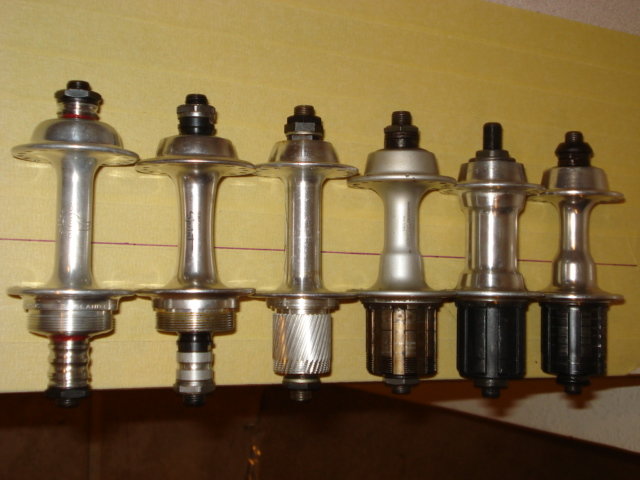
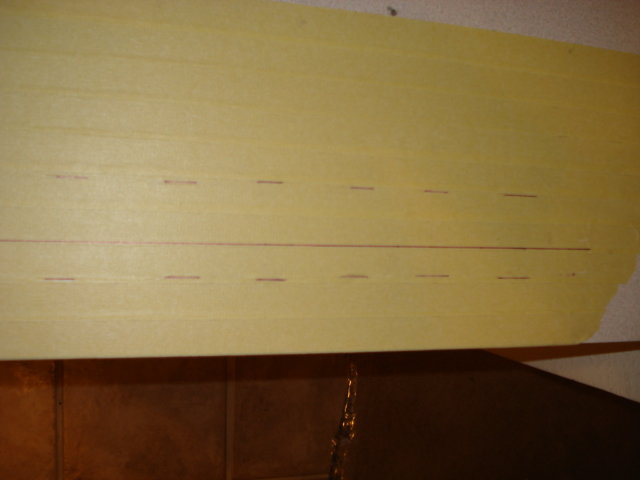
Cassette design comes into play as well. Using a Dura-Ace hub the distance from the back of the low gear cog to the right flange center line is as follows:
8-speed cassette: 5.77mm
9-speed cassette: 5.26mm
10-speed cassette: 4.59mm
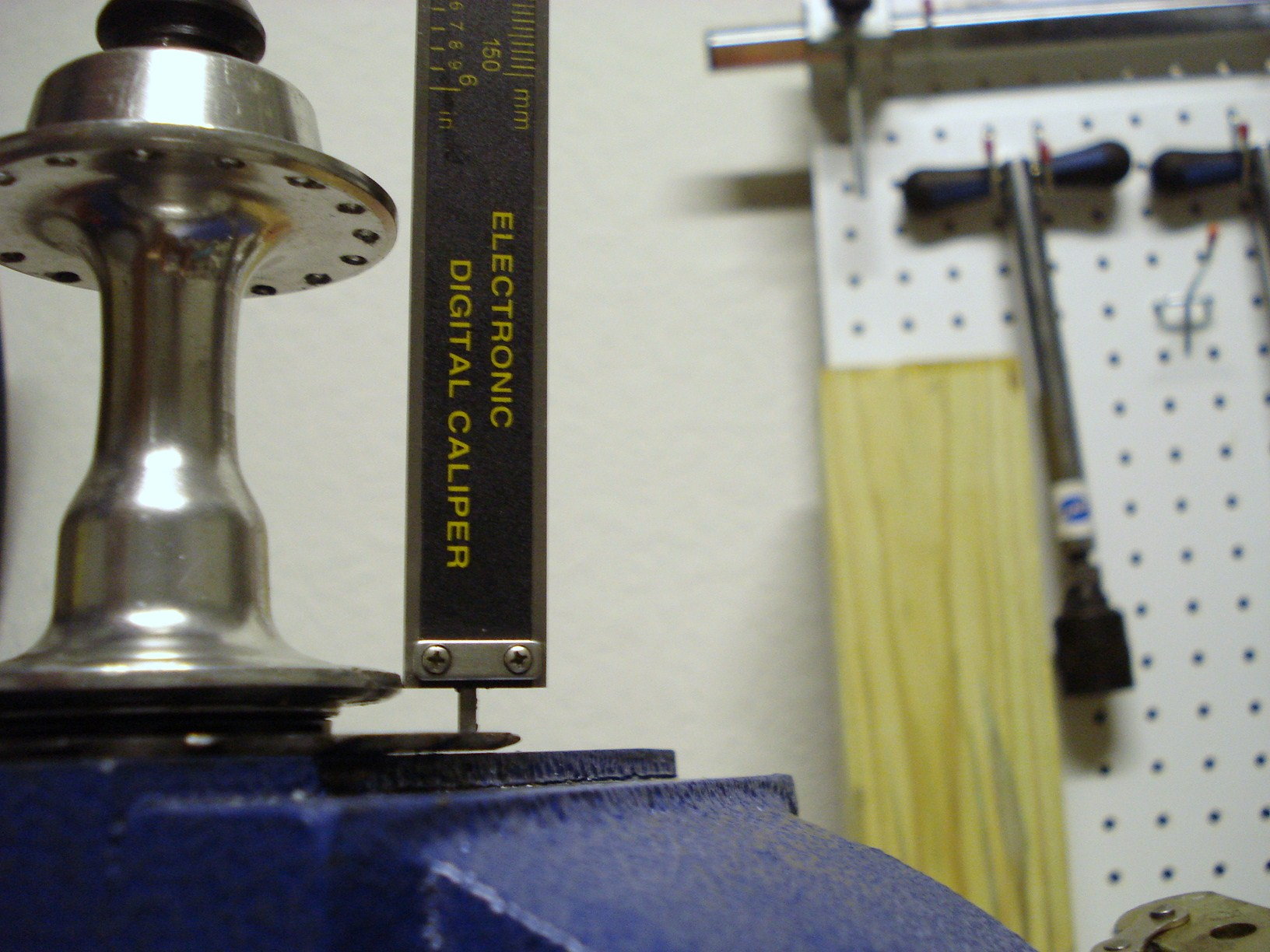
Wheel dish can be a tough concept to understand. In simple terms its the distance from the wheel/rims centerline to the centerline of the right hub flange. Smaller numbers (a lot of dish) are bad while bigger numbers (not so much dish) are good. So, how small is too small? A sampling of various manufacturers hub dimensions finds that
16-18mm from the wheel/rim centerline to right hub flange centerline is about average. The following picture will give you an idea of 'dish' as indicated by the shaded green area.
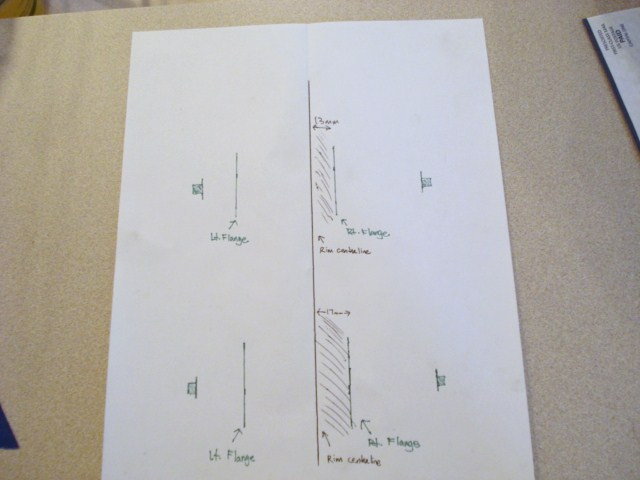
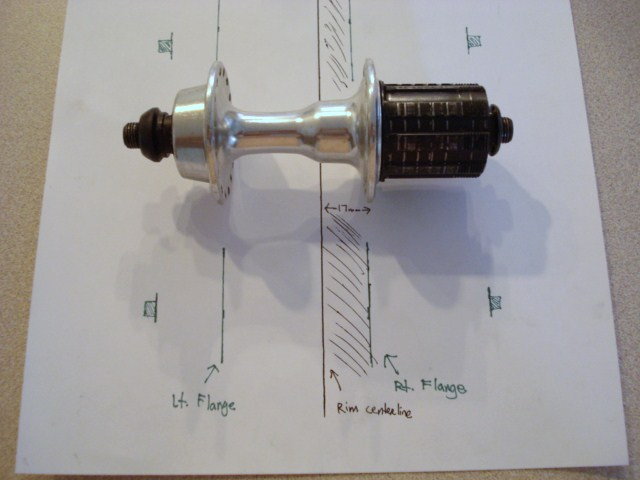
Some individuals choose to simply remove a 4mm spacer from the left side of the axle. Several problems can occur. If the wheel isn't re-dished tire rubbing on the chain stay and off centering of the rear brake will be needed. Simply removing a 4mm from the left side will result in a wheel that's not properly dished but at the same time will NOT compromise the wheels integrity. If the wheel is re-dished so the rims properly centered the rim will be too close to the right hub flange which compromises the wheels integrity because there's too much dish. The following picture illustrate the difference between a hub with a 4mm spacer removed (top drawing) and a hub with proper spacing.
As you can see a hub with a 4mm spacer removed (top illustration) has 13mm of dish which is too much. Remember,
a smaller number means more dish.